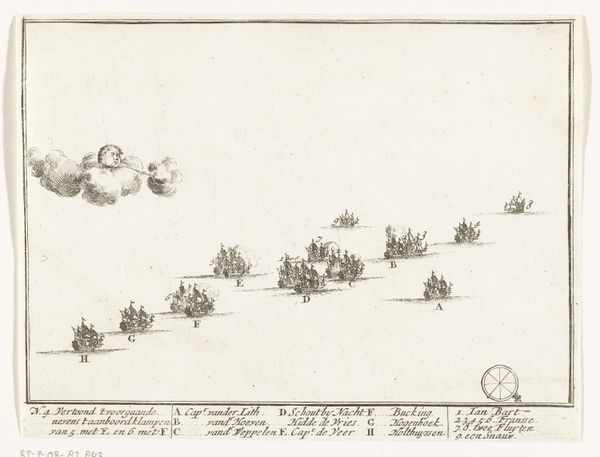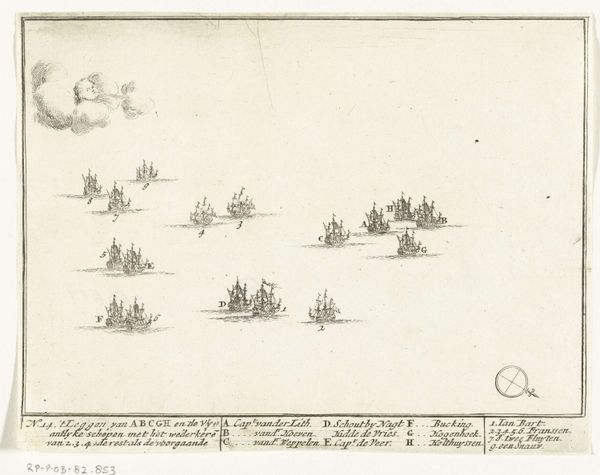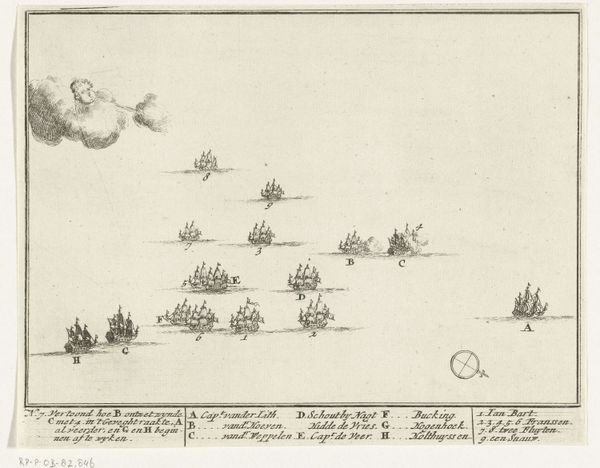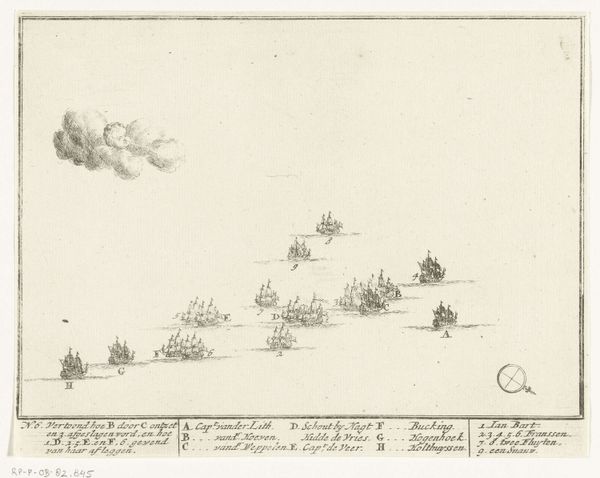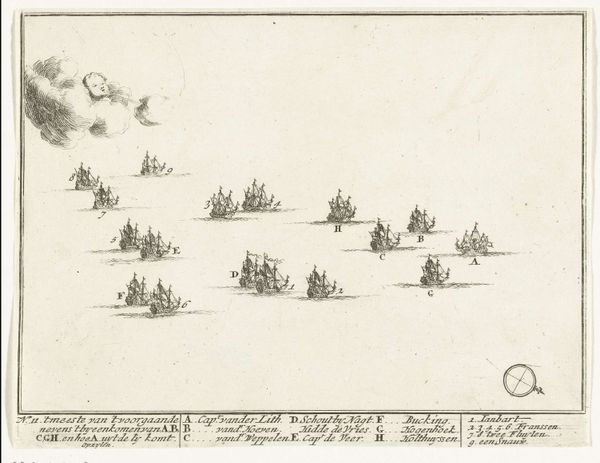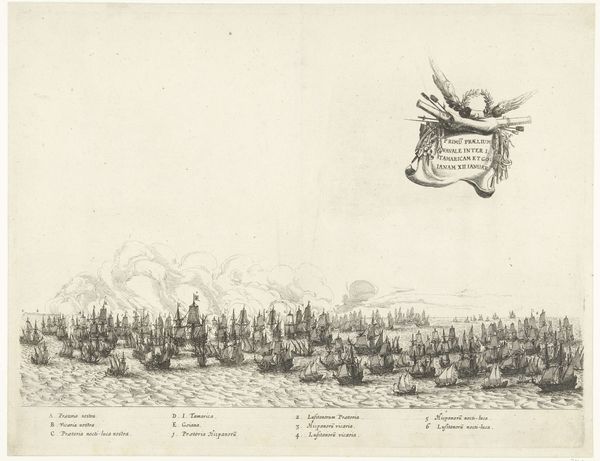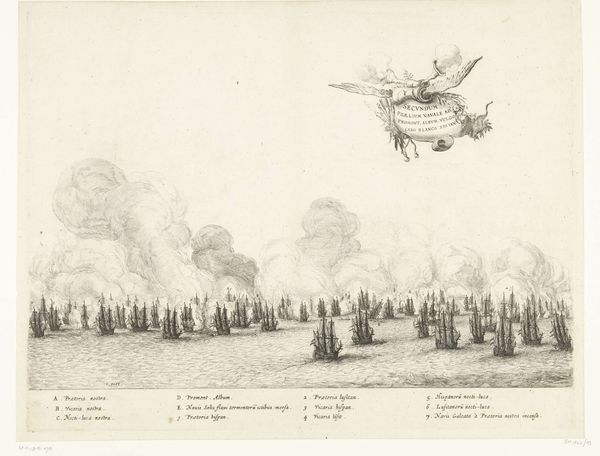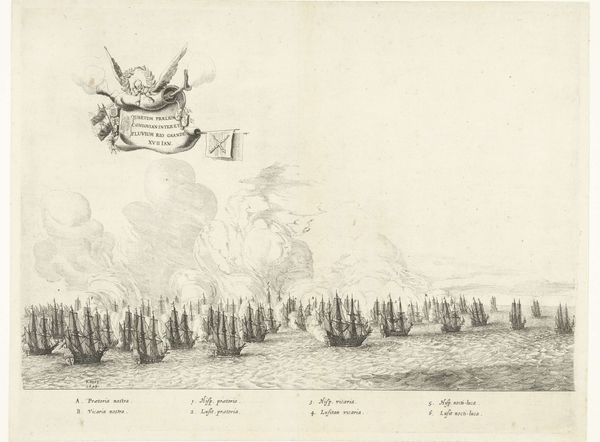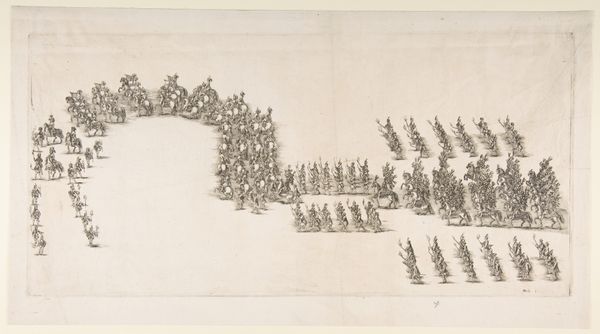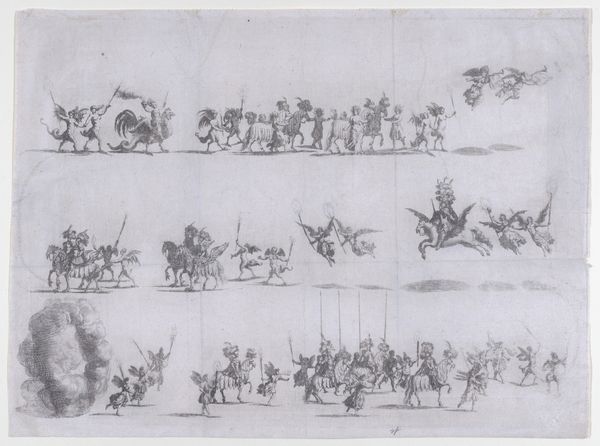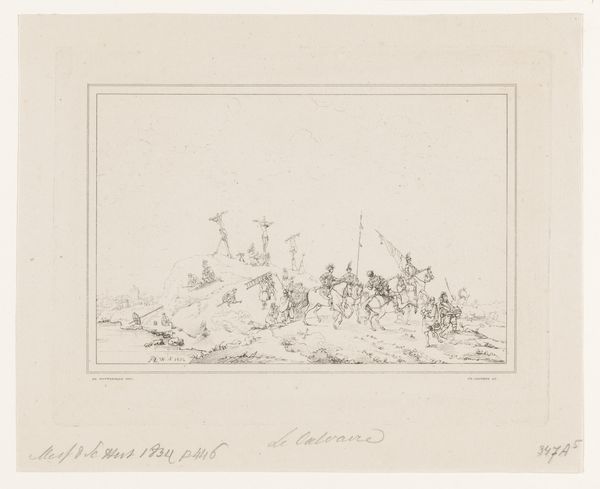
Zeegevecht tussen Hollanders en Fransen op de Noordzee (plaat 5), 1694 1694
0:00
0:00
print, engraving
#
baroque
# print
#
landscape
#
cityscape
#
history-painting
#
engraving
Dimensions: height 150 mm, width 194 mm
Copyright: Rijks Museum: Open Domain
Editor: This is a print from 1694 by Adriaen Schoonebeek called *Zeegevecht tussen Hollanders en Fransen op de Noordzee (plaat 5)*, housed at the Rijksmuseum. It depicts a naval battle between the Dutch and the French, rendered in a rather stylized way. What really catches my eye is that little cherubic face in the top left corner who seems to be summoning the winds. How do you read an image like this? Curator: Ah, yes, a charmingly baroque depiction of maritime conflict. Note how the artist blends the real with the allegorical—the precise arrangement of the ships with the god of wind at the upper corner! To me, it speaks volumes about the Dutch Republic's self-image at the time. What do you notice about the way the ships are organized and labeled? Editor: Well, there’s a key at the bottom that identifies different commanders and ships with letters and numbers which feel rather precise and… well, organized for something so chaotic. It seems as though a hierarchy is depicted; would this reflect the strict naval system in the 17th century? Curator: Precisely. But look closer. Beyond just documenting the order of battle, it's almost a dance, wouldn't you say? A carefully choreographed performance of power. Also, consider this: engravings like this were relatively inexpensive and reproducible. Who do you think the primary audience was? Editor: Probably not the admirals! More likely a wider public, eager for news and perhaps a little patriotic boost. Curator: Exactly! These prints were not just historical records, but carefully constructed pieces of propaganda, intended to shape public opinion. Did you notice the cityscapes visible near the horizon line? Editor: Yes, this level of detail suggests it could also be read as a proud document celebrating the defense of the Republic, seen on the horizon. It is compelling how such seemingly objective records contain such clear biases! Curator: Indeed. Looking closer helps us decode both the explicit narrative and the subtle messages embedded within. There's always more than meets the eye with prints like this, don't you think?
Comments
No comments
Be the first to comment and join the conversation on the ultimate creative platform.
